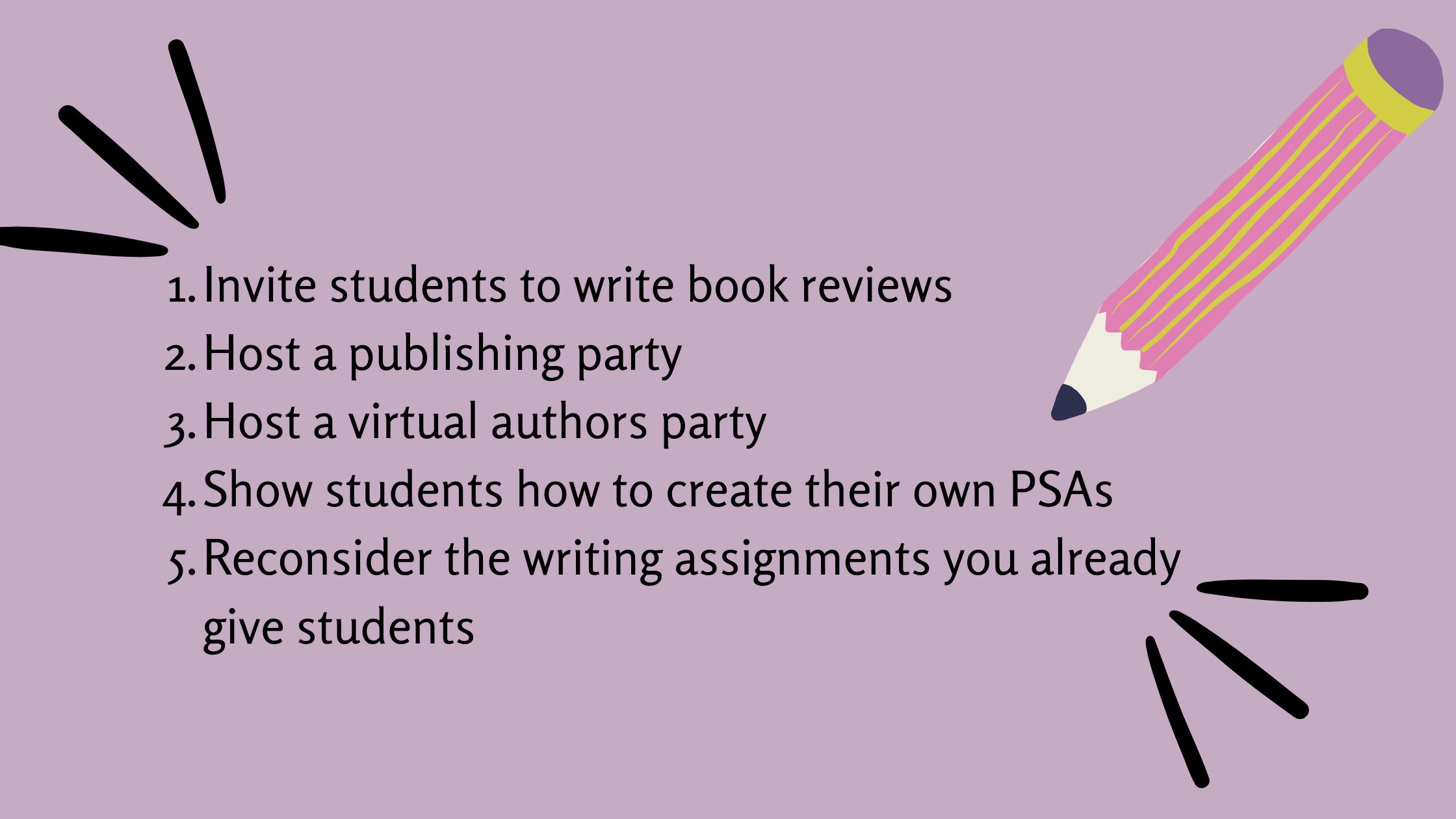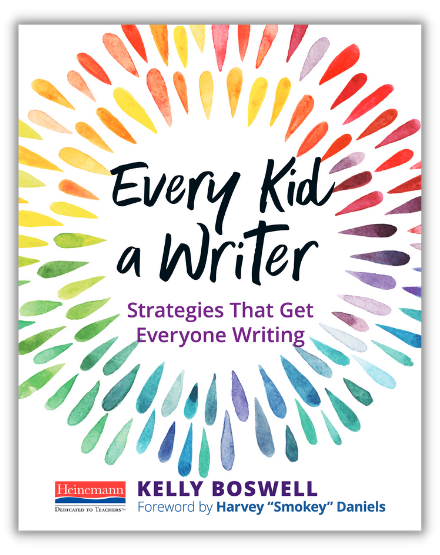
In this adapted excerpt from Every Kid a Writer, Kelly Boswell offers insight into how giving writers an audience of real readers can reignite passion and interest.
Writing is a social endeavor. It was always meant to be a means by which we could be seen and heard—to communicate with the world around us. However, if students are simply completing assignments and turning them in for a grade, is it any wonder why we see the shrug, the slump, and the sharpening of pencils when we ask students to write? Without an actual audience to read and respond and react to our writing, the hard work just isn’t worth it. We almost always write with an audience and a purpose in mind. That’s what makes writing meaningful and worth the investment of our time and effort.
Instead, if we invite students to do the real work of writing—if we invite them to write for readers who matter to them—we just might find the key that unlocks true engagement and energy.
As writing teachers, it’s our job to make sure we are providing opportunities for students to engage in writing experiences that are authentic, are connecting to an actual reader, and are worthy of their time and effort. So how do we connect our students to readers who matter to them? How can we harness this powerful tool and invite all students to engage in the deep and thoughtful work of writing?
Here are a few ways to get started.

- Invite students to write book reviews. Instead of requiring students to write a summary or short response after they finish a book, show them what real readers do! After reading several book reviews together as a class (Goodreads is a great place to start), show them how to create their own! Type them up and tape them to the inside back cover of books in the classroom library. Or the reviews can be placed on the shelves of the school or public library, much like in a bookstore.
Host a publishing party. Once students have completed a piece of writing, invite them to celebrate their hard work by throwing a simple but fun publishing party. Have students place their finished piece on their desk or table alongside a blank piece of paper and a pencil. Then, invite students to visit other students’ desks, read the piece of writing, and leave a compliment on the blank sheet of paper. The beauty of this kind of publishing party is that all students are reading and writing during the entire experience! And students love to read the compliments left by their classmates.

- Host a virtual authors party. Consider posting student work on a blog or classroom website for parents and other community members to enjoy anytime. In addition to the finished pieces, many teachers include photographs showing students engaging in the writing process. Knowing that their writing will be published online can be extremely motivating.
- Show students how to create their own PSAs. After students have viewed and listened to several public service announcements, invite them to choose a cause that is important to them and then work alone or with a partner to create their own PSA using iMovie or a simple PowerPoint slide. One school utilized a projection system and displayed the students’ PSAs in the foyer during parent-teacher conferences. While they waited for their parent-teacher conference to begin, parents and caregivers were able to view the PSAs and find out more about what students were learning.
- Reconsider the writing assignments you already give students. How might you tweak them so that the writing reaches an authentic audience? A research report on a state might become a travel brochure to be duplicated and distributed. A how-to piece might become a poster that focuses on something genuinely useful to kids in your school—navigating the school cafeteria or joining a game at recess—and gets displayed in a useful location in the school
Kelly recently visited the podcast with second grade teacher Blake Williams to talk about offering choice in the writing classroom. Listen here.
Sometimes the hardest part about teaching writing is getting students to write at all. Kelly Boswell reminds us that every writer is reluctant to write at some point. It’s the conditions–not the kids–that determine success. In Every Kid A Writer, Kelly provides six field-tested strategies to get everyone in the classroom writing with energy and enthusiasm. As Kelly writes: “We want kids to know, deep in their bones, that writing has so much to give and so much to teach. It starts with us.”



